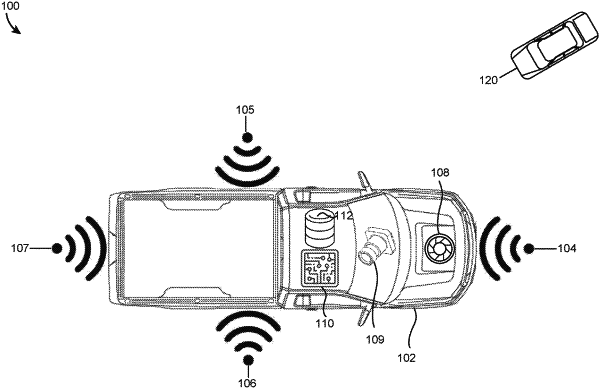| CPC G06F 18/251 (2023.01) [G06F 18/253 (2023.01); G06F 18/256 (2023.01); G06V 20/58 (2022.01); H04L 47/34 (2013.01); H04L 67/12 (2013.01)] | 14 Claims |

|
1. A computer implemented method performed by one or more processors, comprising:
capturing data, using a plurality of sensors, associated with one or more targets, the data including timestamps indicating originating times;
obtaining, at a filter, the data associated with the one or more targets from the plurality of sensors, the data including the timestamps indicating the originating times;
from the obtained data, identifying an unsequenced measurement having a first timestamp corresponding to a first time of the filter before a second timestamp corresponding to a second time of a second measurement but obtained at the filter after the second measurement was obtained at the filter;
updating a state of the filter according to the unsequenced measurement, based on a nonlinear measurement model or a nonlinear process model, wherein the updating of the state of the filter comprises retrodicting the filter, from a current state or a most recent state corresponding to the second timestamp or corresponding to a different timestamp, to an updated state corresponding to the first timestamp, wherein the updating of the state of the filter fuses the unsequenced measurement with other measurements comprised within the obtained data, thereby resolving the unsequenced measurement, wherein the retrodicting comprises:
determining an availability of two known states of the filter, wherein the two known states comprise a value of an immediately preceding state to the unsequenced measurement of the filter and a value of an immediately subsequent state to the unsequenced measurement of the filter; and
in response to positively determining the availability of the two known states, interpolating based on the two known states;
estimating one or more attributes of the one or more targets based on the updated state of the filter; and
performing a navigation action on a vehicle based on the estimated one or more attributes, wherein the navigation action comprises adjusting a speed and a direction of the vehicle to navigate around the one or more targets, wherein the one or more targets comprise any of other vehicles, pedestrians, road signs, or road signals.
|